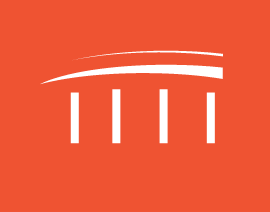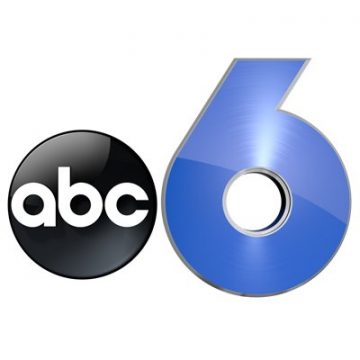On Sunday, December 27, President Trump signed the Consolidated Appropriations Act (the “Act”), the fifth longest bill to be passed by Congress in the history of the country. In this article, we break down the most significant changes affecting you, your family, and your business.
Jump to:
- Individual Payments –Stimulus Checks
- Unemployed Workers and Families First Coronavirus Response Act
- Eviction Moratorium
- Student Loans
- Employee Retention Tax Credit
- Low-Income Housing Tax Credit
- Business Deduction for Meals
- Economic Injury Disaster Loans
- Paycheck Protection Program
Individual Payments – “Stimulus Checks”
The Act will provide direct payment to individuals and families, $600 per eligible individual ($1,200 for joint filers) and $600 per qualifying child (up from $500 last time). Such payments phase out based upon an individual’s Annual Gross Income (AGI) based on 2019 returns.
The payment is reduced by 5% of the amount that the taxpayer’s AGI exceeds $75,000 (or $150,000). For example, a single taxpayer with no qualifying children and with an AGI of $87,000 is considered “fully phased out.” In contrast, a single taxpayer with 2 qualifying children is “fully phased out” at AGI of $111,000. The phaseout applies with respect to the stimulus payments for each qualifying child.
Note: Estates and trusts are ineligible for these stimulus payments.
The information provided herein regarding individual stimulus payments is subject to change as it has been a hot topic resulting in President Trump delaying his signature to the Act. In a statement released by President Trump Sunday night (December 27th), he said the Senate would “start the process for a vote that increases checks to $2,000 on Monday, December 28.” The house approved a measure to increase checks to $2,000. As of the date of publication of this article, such measure is before the Senate for vote. Any changes to the stimulus payments will be covered in a future article.
Unemployed Workers and Families First Coronavirus Response Act
Unemployment Insurance
There will be continuing aid for unemployed workers under the Act. Individuals are given an 11-week extension of the unemployment insurance (UI) compensation benefits, which was first provided in the CARES Act. Those UI benefits were originally set to expire on December 26.
Pandemic Unemployment Assistance
This Act also includes Pandemic Unemployment Assistance, which extends UI benefits to workers who traditionally are ineligible, such as gig economy workers and independent contractors. A supplement to state UI compensation, Federal Pandemic Unemployment Assistance will increase the maximum number of weeks from 13 to 24 weeks and provide an additional $300 per week starting after December 26, 2020.
Pandemic Emergency Unemployment Compensation
Pandemic Emergency Unemployment Compensation (PEUC), originally providing an additional 13 weeks of UI benefits, will also be extended for 11 weeks (for a combined maximum of 50 weeks) and will expire on March 14, 2021. Federal funding will be extended for states waiving their waiting periods for benefits.
Families First Coronavirus Response Act
While not directly related to unemployment, a refundable payroll tax credit created by The Families First Coronavirus Response Act (FFCRA) to compensate employers for costs associated with paid sick leave as well as expanded family and medical leave due to COVID-related eligible reasons, was not extended as part of the relief bill. However, employers will be able to get the same tax credits if they voluntarily provide the leave through March 2021. Employees who have already used their “bucket” of available paid sick leave and/or expanded family and medical leave in 2020 will not have an additional amount of available leave for which the employer can take a tax credit in 2021. This means that employers need to evaluate how they will treat COVID-related leave requests in the first quarter of 2021, as there are a few options, particularly if the employer is otherwise obligated to provide family and medical leave pursuant to the traditional Family and Medical Leave Act.
Eviction Moratorium
The eviction moratorium issued by the Centers for Disease Control and Prevention (CDC) is extended through January 31, 2021.
Student Loans
The Act did not extend deferral of payments on Federal student loans. For now, they become payable again in February 2021. There has been talk about further extensions and has been predicted that Joe Biden, once in office, might extend the deferral by Executive Order, as President Trump did a few months ago.
Employee Retention Tax Credit
The Act extends the CARES Act Employee Retention Credit, a refundable tax credit against certain employment taxes on the qualified wages an eligible employer pays to employees, through July 1, 2021. Furthermore, the Act increased the maximum per-employee credit from $5,000 to $7,000. The Act also clarifies that businesses taking PPP loans will be able to take the Employee Retention Tax Credit.
Low-Income Housing Tax Credit
There will be increases allocations to states for the Low-Income Housing Tax Credit (LIHTC). The Act establishes a 4% rate floor for calculating credits related to acquisitions and housing bond-financed developments, beginning in 2021.
Business Deduction for Meals
The Act effectively brings back a full deduction for business meals. Before the Act, only 50% of such expenses were deductible. Starting in 2021, there is allowed a 100% deduction of the costs of business food or beverages “provided by a restaurant” and paid before January 1, 2023.
Economic Injury Disaster Loans
The Act will provide aid for small businesses struggling after nine months of pandemic-induced economic hardships. $20 Billion will be provided for new Economic Injury Disaster Loan (EIDL) grants, which will be made to businesses in low-income communities with 300 or fewer employees. Businesses must have suffered economic loss of more than 30% and must apply for an EIDL in order to receive the grant- the grant is an “emergency grant” intended to get some money into the hands of the business while the loan is being reviewed and processed. EIDL grants are not includable in taxable income and business expenses paid with such grants are deductible (if such expenses would otherwise ordinarily be deductible).
The grant is $10,000 (not “up to $10,000″) unless a business received an EIDL grant under the CARES Act. If so, the amount you received under CARES Act reduces the grant this time around. For example, if a business received $1,000 under CARES Act, it can receive $9,000 now (assuming the other eligibility requirements are met).
Paycheck Protection Program
Qualifications
The Act provides $284 Billion as a “PPP second draw” opportunity for particularly hard-hit employers with fewer than 300 employees. Borrowers whose gross receipts in any quarter of 2020 fell by 25% or more compared to the same quarter of 2019 are generally eligible. In addition, eligible persons generally are:
- Any business concern, nonprofit organization (including 501(c)(6) organizations), self-employed individual, sole proprietor, and independent contractor;
- Which is not 20% or more owned, directly or indirectly, by an entity or organization formed in or organized under the laws of the People’s Republic China or Hong Kong or that has significant operations in the People’s Republic China or Hong Kong;
- Which does not have on its Board of Directors a resident of the People’s Republic China; and
- Which does not receive a shuttered Venue Operator Grant under the Act.
NOTE: You are not ineligible for another PPP loan simply because you received one in 2020, as long as you have used or will use all your original PPP funds and the other eligibility requirements are met.
Want to know if your business qualifies? Contact a CPM business attorney to assess your eligibility.
Deductible Business Expenses
In addition, retroactive to the date of enactment of the CARES Act (i.e., applicable to past and current PPP loans), deductible business expenses paid with PPP funds are now fully deductible.
Allowable and Forgivable Uses
There are additional allowable and forgivable uses of PPP Loans:
- Covered operations expenditures – payment for any business software or cloud computing service that help business operations; product or service delivery; processing, payment, or tracking of payroll expenses; human resources; sales and billing functions; accounting; or tracking of supplies, inventory, records and expenses.
- Covered property damage costs – costs related to property damage and vandalism or looting due to public disturbances that occurred during 2020 that was not covered by insurance or other compensation.
- Covered supplier cost – expenditure made by an entity to a supplier of goods for the supply of goods that— (a) are essential to the operations of the entity at the time at which the expenditure is made; and (b) is made pursuant to a contract, order, or purchase order— (i) in effect at any time before the covered period with respect to the applicable covered loan; or (ii) with respect to perishable goods, in effect before or at any time during the covered period with respect to the applicable covered loan.
- Covered worker protection expenditure – including, PPE, sanitization, expenses to facilitate social distancing, etc.
Note: These allowable and forgivable uses are effective as of the date of enactment of the CARES Act and, thus, apply to any PPP loan made before December 22, 2020. HOWEVER, they do not apply to PPP loans that have already been forgiven.
Borrowing and Forgiveness
Borrowing
Maximum loan amount is equal to the lesser of:
- The average total monthly payroll during either the 1 year prior to the date of the loan or calendar year 2019, multiplied by 2.5, or;
- $2,000,000 (for most businesses). Accommodation and Food Services sector businesses can borrow up to $3,000,000 and their average monthly payroll multiplier is 3.5.
Lenders are held harmless for reliance on PPP borrower certifications and documentation. No action can be taken against the lender relating to loan origination or forgiveness if the lender acts in good faith and all other regulatory requirements applicable to the lender are met. This is likely intended to “speed things up.” By banks not having to engage in as much review of loan applications or forgiveness applications, the approval of loans and forgiveness should come quicker.
Covered Period
Borrowers can now select an end to a covered period that is between 8 and 24 weeks (after the loan was made. Previously, it was 8 weeks or 24 weeks. Now a borrower can select, say, a 12-week covered period. This may help certain businesses enormously and will be covered in a future insights article.
Loan Forgiveness
Many of the forgiveness rules go unchanged. For loans of $150,000 or less there is simplified forgiveness. The borrower merely submits a one-page statement giving the number of employees supported, the estimated loan forgiveness amount based on the actual uses of the funds, the total loan value, and confirmation of the truth and accuracy of such statement. If this is done, the loan is forgiven. No formal application is needed, nor is any supporting documentation. This applies to any PPP loan that has already been made but not yet forgiven (and will apply to future PPP loans). The Act repeals the requirement that PPP borrowers deduct the amount of any EIDL advance from their PPP forgiveness amount.
Finally, the SBA is required to submit to Congress an audit plan detailing the policies and procedures for conducting forgiveness and reviewing loans and the metrics used by SBA to decide which loans will be audited.
Conclusion
Each American will be affected by the Act at some level. The attorneys at Carlile Patchen & Murphy LLP have an abundance of in-house expertise to answer all your pressing questions. Do not hesitate to contact a member of our business law group or your CPM attorney with questions.





0 Comments